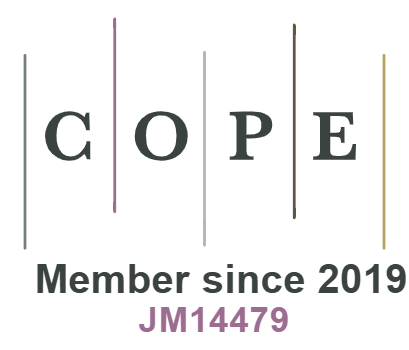Submissions
Submission Preparation Checklist
As part of the submission process, authors are required to check off their submission's compliance with all of the following items, and submissions may be returned to authors that do not adhere to these guidelines.- The Author declares that the Work is an original creation and that they have the appropriate copyrights to the Work, including moral as well as economic rights. If the applicant is not the sole author, he/she undertakes to indicate the percentage share of all co-authors in the preparation of the text. This information should be entered in the field "Rights - percentage share of authors".
- The Author hereby declares that they did not use generative artificial intelligence tools during the preparation of the manuscript. If otherwise, the author undertakes to indicate the name of the tool, the purpose and the exact reason for use and confirms that he/she has carried out a thorough, critical verification of the text, especially in terms of the possibility of generating false, incomplete or biased information, the occurrence of plagiarism or lack of/incorrect attribution of authorship, and edited it accordingly. The information should be entered in the "Comments for the Editor" field.
- The author assures of no violations of publication ethics and takes full responsibility for the content of the publication. The Author acknowledges and accepts that, in the event of the Author making a false statement, they shall be liable for any damages incurred by the University of Lodz.
- The author undertakes to inform about any possible conflicts of interest in the "Comments for the Editor" field.
- The submitted text must be original text that has not been previously published. It should also not be submitted to the editorial office of another journal with a request for its review and possible publication.
- The submitted text should take into account the above-mentioned guidelines regarding text editing rules.
- Submitted texts, after being approved by the Editorial Board, will be sent to reviewers (double-blind review).
Copyright Notice
- The Author grants the University of Lodz, represented by the Lodz University Press, a non-exclusive license to exercise economic copyrights to the Work in all fields of exploitation, as stipulated in the Copyright and Related Rights Act of February 4th, 1994, and open access, including the regulations of the Creative Commons license. The granted licence also includes the right to grant sublicenses within the stipulated fields of exploitation.
- The licence is unlimited in territory and granted for a period of 70 years.
- Due to the implementations of the policy of open access to scientific publications, the University of Lodz will use the Author’s authorisation to deposit the Work in the University of Lodz Repository and other distribution platforms, while the Author undertakes not to use the termination of the license agreement throughout its entire term.
- The Author is not entitled to remuneration for creating the Work, its delivery to the Press, and for granting the rights license. The parties mutually agree that the Author will receive an author’s copy in the form of a pre-press PDF file, containing exclusively the part of the Work to which the Author has moral rights.
Hereby, I acknowledge that:
- The Administrator of the personal data of the Author is the University of Lodz (address: ul. Narutowicza 68, 90-136 Lodz).
- The Personal Data Protection Supervision at the University of Lodz can be contacted via the following e-mail address: iod@uni.lodz.pl.
- The data will be used to publish and disseminate the Work.
- The data shall be processed in order to complete the publishing and disseminating the text, pursuant to the provisions within Art. 6 Section 1 (b) of the Regulation (EU) 2016/679 of the European Parliament and of the Council of 27 April 2016.
- The obtained data shall be processed and stored for the period necessary to perform the purpose, including the periods of data storage indicated by generally applicable laws and regulations.
- The Author has the right to demand access to their personal data, to request their personal data be corrected, to restrict or limit the processing of their personal data, and to demand their personal data be deleted if permissible by law.
- The Author has the right to file a complaint to a data protection authority on suspected violations of the law related to the processing of personal data.
- The provision of personal data is necessary to conclude and complete the publishing and disseminating the text, and it arises from legal regulations.





